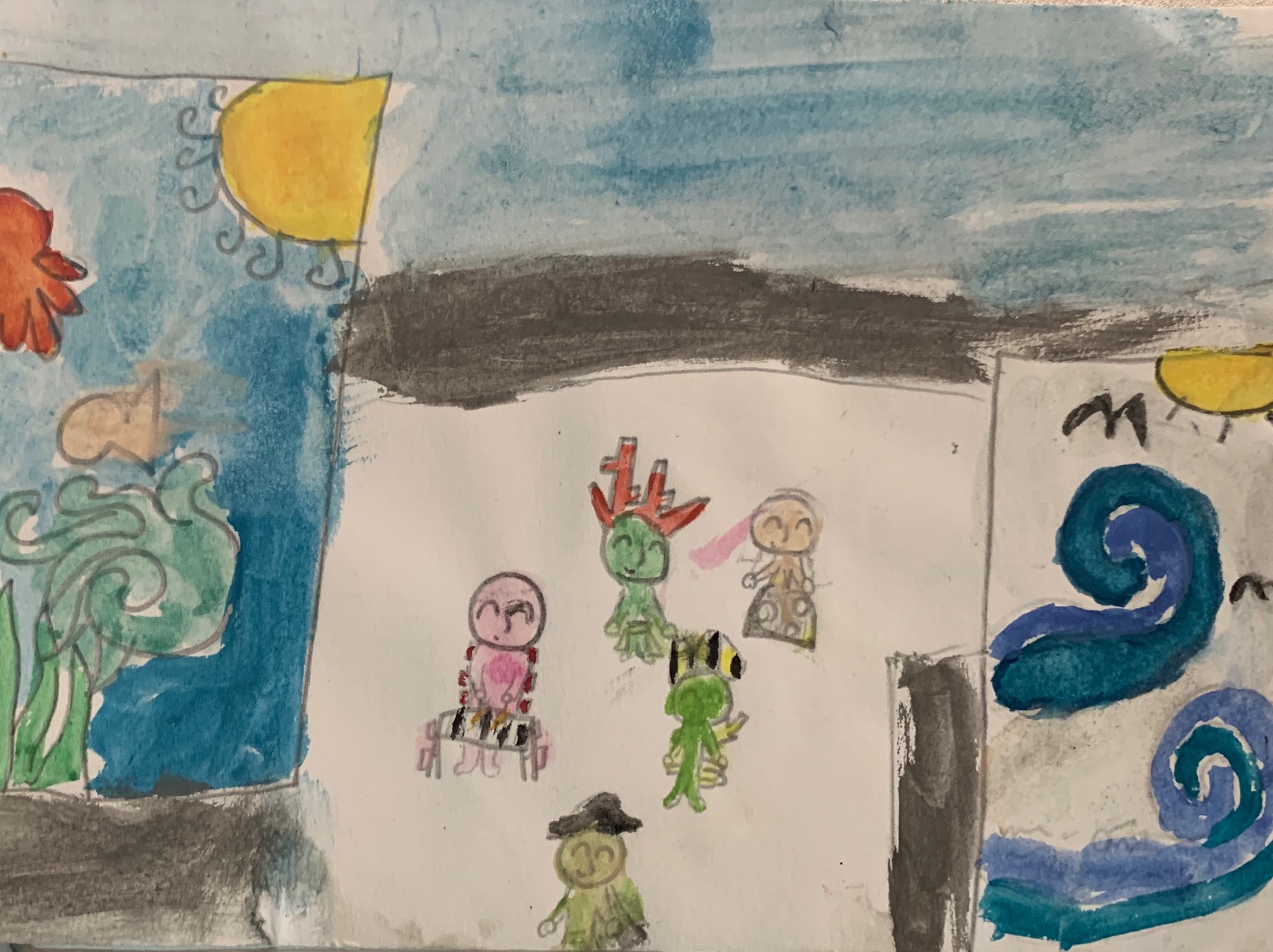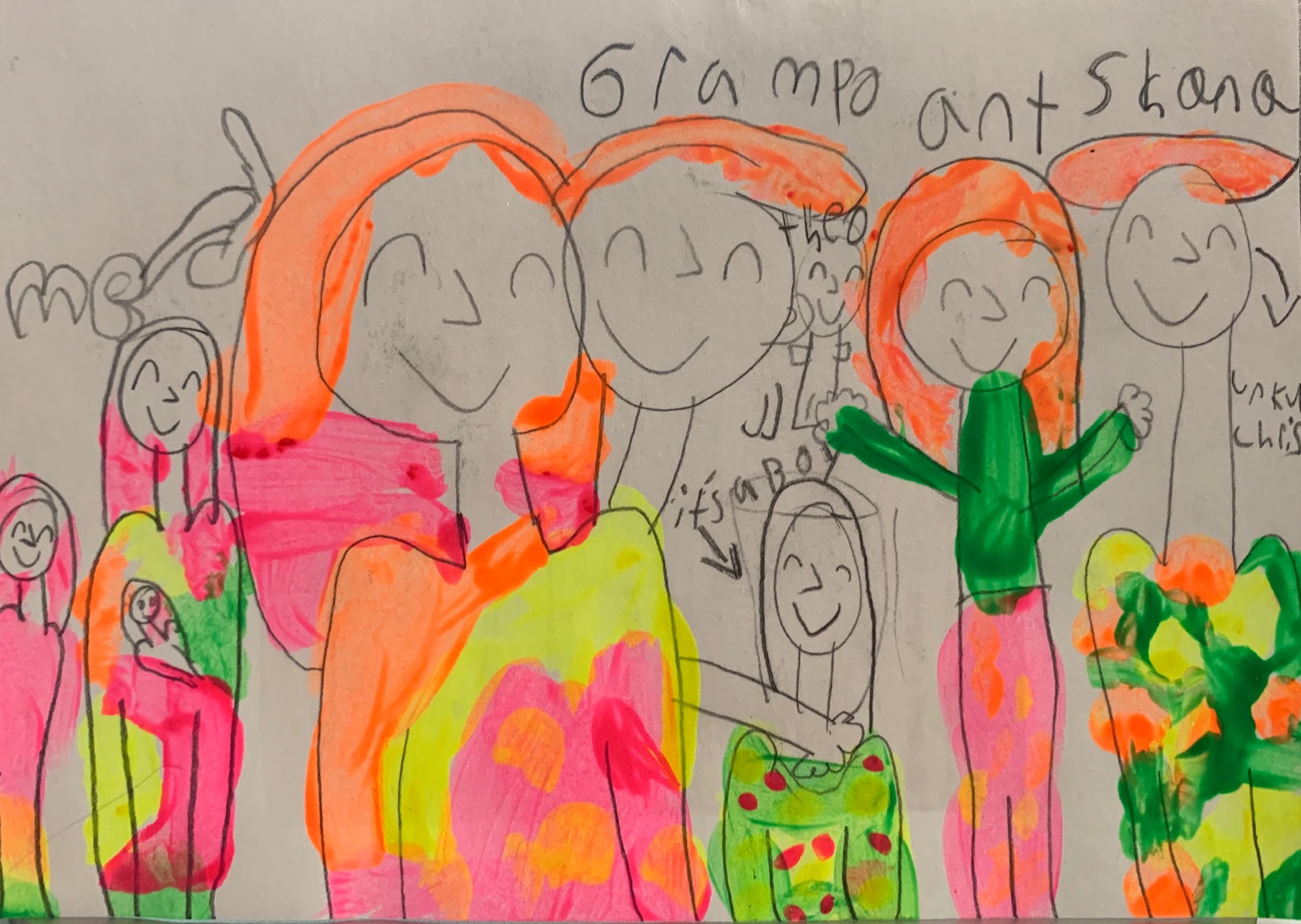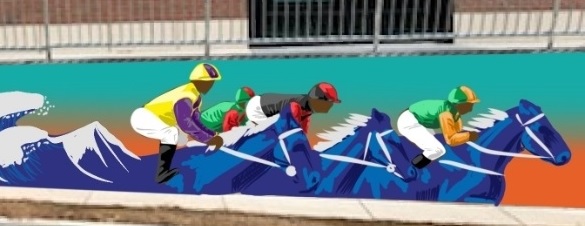Using Art to Keep a Neighborhood’s Culture in Place
This profile is part of a three-part series that highlights the work of five NeighborWorks network organizations that pursued new or expanded partnerships with artists or arts-based organizations to better understand, elevate and address issues related to gentrification and displacement in their communities. Using creative methods, the partners developed shared goals and tested new community-driven strategies. These partnerships were supported by NeighborWorks America as part of its work to support creative community development and use the power of art, culture and creativity to catalyze social, physical and economic transformation, with consulting support on artist-led community development from Springboard for the Arts. Read part two here and read part three here.
- NeighborWorks Salt Lake and Mestizo Coffeehouse (Salt Lake City, Utah) planned a series of events highlighting the challenges incarceration poses to the community.
- Community Ventures Corporation and local artists (Lexington, Kentucky) created art highlighting the voices and history of the residents residing near the development of a new, large, mixed-use development.
- New Kensington Community Development Corporation and Portside Arts Center (Philadelphia, Pennsylvania) partnered with local businesses on projects with local youth showcasing their neighborhood pride.
- East Bay Asian Local Development Corporation (EBALDC) and Destiny Arts (Oakland, California) worked with youth in a dance residency program in a neighborhood undergoing change.
- Hudson River Housing and Arts Mid-Hudson (Poughkeepsie, New York) created a mentor-mentee artist program to create pieces illustrating gentrification.
Artists are a key part of the culture of a place. For neighborhoods that are at risk of instability due to real estate market forces, artists connected to a particular place have immense power to offer tools of resilience.
That’s what happened in a project spearheaded by NeighborWorks America, in collaboration with Springboard for the Arts. The project brought together artists and arts organizations with community development organizations that are part of the NeighborWorks network. These collaborative teams focused not only on “placemaking” but also “placekeeping” projects in their communities, creating a sense of community through art in a place, and maintaining the community that has been alive and vital all along.
Whether it was the last train stop out of New York City, a neighborhood hit hard by opioids in Philadelphia, or a Black neighborhood famous for its horse racing history in Kentucky, the projects revealed the challenges of holding the integrity of a neighborhood. Stakeholders found that telling their community story offered an avenue for building strength, as well as a resilient sense of place.

Preventing Displacement in Poughkeepsie
The city of Poughkeepsie is the last stop on the Metro North train line out of New York City, and as such, it’s a prime target for people who want to get out of New York, while still having access to the city. “When COVID-19 hit, Poughkeepsie suddenly became a very hot market and people are buying properties without even looking at them,” says Anita Fina Kiewra, a care manager with Hudson River Housing Inc.
With a mission to fight homelessness, Hudson River Housing braced for the worst at the start of the pandemic. Because of the eviction ban, a huge spike in homelessness hasn’t occurred yet, “but we definitely see a squeeze on affordable housing in this region,” Kiewra says.
The nonprofit organization teamed up with Arts Mid-Hudson on a project that would use arts to hold off the tides of over-development of the area. The partnership between Hudson River Housing and Arts Mid-Hudson drew inspiration from an initiative called Irrigate, enacted by Springboard for the Arts in St. Paul, Minnesota, during the construction of a light rail line along a main commuter street in the city. The organizations learned about Irrigate and Springboard for the Arts artist-led model through the cohort training process.
“The lesson of the Irrigate project was that when you paired artists from the community with small businesses fighting for their survival during a long road reconstruction project, artists were able to help connect these businesses to the broader community,” said Jun-Li Wang, associate director of programs with Springboard for the Arts. “Funding and supporting artists who are already connected to the community helped provide a connection point to the neighborhood.”
Collaborators from the two Poughkeepsie-based organizations liked the idea of engaging in mini-projects, to give individual voices a chance to show how they see their city, said Lilia Pérez, the grants and program manager for Arts Mid-Hudson. “That whole idea of putting your stamp on where you live, and taking ownership of your space. I’m presenting your work and your vision for what you want your community to be and what you want your community to talk about. That’s what we see as placekeeping.”
Pérez added that a vital part of the project was to show the important role of artists within a community. “If we can show that these people are here and they exist, and they have thoughts about what their community should be,” she said, “it’s harder for people to come in and replace all of that and say, ‘we’re going to pull all of this out and we’re going to rebrand your community to be something that it’s not.’”
Emerging artists were paired with mentor artists, many of them who were based along Main Street, called Middle Main, with its intersecting African American, Latino, and European-American communities. The pairings helped tap into the talent and expertise of the community, whose artists may not have been known or recognized by larger or more established institutions.
“You know that the mainstream arts community may not know these folks,” Kiewra said of the lead artists. “The lead artists are people of color from this neighborhood who are genuinely creative people and creative artists, but not necessarily recognized right now.”
“We wanted to get the folks that are doing artistic practice, but are not in the gallery scene or in the club scene,” Pérez said. “They’re a little bit more, you might say underground, but actually just not noticed.”
Among the mentor artists was veteran music producer Tim McQueen, who was paired with emerging vocal artist Rose Mariah. Other projects included a photo and documentary project capturing haircuts performed on day laborers in the park, and papier-mâché sculptures by artist Isabel Velasco Gómez. There was also a project by Art Effect, which paid youth a stipend as they worked with a mentor to create a sculptural installation responding to the murder of a local Black college student named Maurice Gordon.
Rapper and poet Jamaal Abdul Hakiym Graham (known as JAHG), meanwhile, was paired with spoken word artist Poet Gold. Gold says she had JAHG in mind when she was approached about being a mentor artist. “I used to have an open mic called Open Mic in the Valley,” she said. That’s where she met JAHG. “I found his representation of his art form to be very uplifting and transformative,” Gold said.
Through the mentorship process, Gold said she worked with JAHG on his project that centered around gentrification and what it means to him as an artist. “JAHG is about what you are bringing to the table,” Gold said. “What do you need to move us forward? The belief is that underserved communities are more vulnerable to gentrification because of lack of access to equity and political representation.”
JAHG’s process mirrors the goals of the project. “The point of it all is to be discussing these topics and inspiring a community discussion of these tough issues,” Pérez said.
“What some of these groups found was that placekeeping lends itself to opening up discussions about race, about equity, and about social justice in new ways,” said Calece Johnson, Project Manager from NeighborWorks America. “It’s a way to promote dialogue that challenges communities to probe deeper into their shared histories and futures, building stronger connections.”

Keeping Culture Alive: Fishtown, Kensington and Port Richmond
In Philadelphia, New Kensington CDC (NKCDC) and the Portside Art Center partnered for their work together, but their project area encompassed three different neighborhoods: Fishtown, Kensington and Port Richmond.
“It’s weird because they’re all within two miles of each other,” said Jake Norton, interim economic development co-manager from NKCDC. “Philadelphia is a city that’s distinguished by its neighborhoods, and there’s just very different areas when you go another 10 blocks.”
One of the neighborhoods, Kensington, has been in the national news for being at the center of the opioid epidemic. “It’s a low-income neighborhood that unfortunately doesn’t receive resources seen in more affluent areas of the city and has seen post-industrial disinvestment,” Norton said.
New Kensington has seen its homeless population rise to over 800 people in the past few years, Norton said, but it is adjacent to two neighborhoods that are economically booming. In Fishtown, property prices are skyrocketing, flipping as soon as they hit the market. Port Richmond’s historic Polish character, meanwhile, is threatened by its status as a hot real estate market. Norton said generations of families have been living there for 100 years or so.“It’s starting to see a lot of development creep in.”
Kelsie Lilly is an educator with the Portside Arts Center (PAC), the arts organization partner to NKCDC. Lilly said part of the project was to help each of the neighborhoods keep their culture alive. “I really hope that we can continue to use art to uplift and communicate the different cultures of the people in Philadelphia, because there are so many,” she said.
In her role with PAC, Lilly worked with young people on the creative placemaking projects, including a community mural project, and an art exhibit, that due to COVID-19 became a book project. Through these activities, Lilly engaged in conversations with the young people about what their communities meant to them.
“We were talking about displacement, but it wasn’t at the forefront,” Lilly said. “Working with the children, we didn’t want to like push these huge things on them. What we were hoping to do was mostly start conversation.”
Lilly found a helpful frame for the young people was to ask them what makes them proud of where they live. That could mean the foods they eat, sports, or their families. “The goal was to start conversations around displacement that might be happening around them, how you feel about it, and taking that information and then figuring out what to do with it next,” Lilly said. “The hope is to let culture speak for itself.”

Preserving History in Lexington
Former Kentucky Poet Laureate Frank X Walker’s Poem, “Ode to the East End,” got the super-size treatment outside of the MET, a new mixed-use development north of downtown Lexington. Printed on white canvas material, it can be read from all around the area, where its last lines read:
You are downtown Lex’s whole left ventricle.
When the last shotgun house is gone
you will still be her heart.
The large piece of public art is part of an initiative of Community Ventures, an economic development organization that is seeking to revitalize the historically Black neighborhood, East End, while also preserving the integrity of the neighborhood’s history by promoting home ownership for current residents. The organization’s Artists’ Village project, for instance, is a live-work community where homes with attached art studios are being built for artists.
The MET was named through a community engagement process, after the Midland Avenue and East Third Street intersection. The area has a poverty rate of 34%, and over the past five years, the neighborhood’s abandoned and blighted properties have begun attracting out-of-area investors, who are driving up competition for commercial properties without fixing those properties up, and investing in housing development, which in turn is driving up rent. Community Ventures’ work is rooted in its overall efforts to stave off displacement of its longstanding communities.
According to Mark Johnson, president of artistic operations at Community Ventures, Walker’s poem exemplifies the organization’s efforts to use art to create a narrative around the neighborhood. Community Ventures wanted to make sure that as development came into the area, the history of East End didn’t get lost, he said. That includes East End’s prominence as the center of a vibrant equine industry and a prominent horse racing track, as well as groundbreaking Black jockey Isaac Murphy.
To make sure that East End didn’t lose that valuable history, Community Ventures partnered with a community historian to document the history of people and buildings in the neighborhood. Community Ventures also engaged with artists and Heather Lyons, the Arts and Cultural Affairs director for the Mayor’s Office. Together, they made up a committee that acted as curators for the project, making decisions about which individuals from the city’s history they wanted to highlight and which artists should be tasked with telling the story of the neighborhood.
“This community does have a rich tradition of art,” Johnson said. “We’ve got a historical theater that was still operating in the area. All the big names used to play there back in the day. Count Basie and everyone that was anyone played at this place. That’s kind of what we’re trying to bring back to this community–an increased resurgence of art.”
Walker’s poem is part of that storytelling. “As you drive into our community, that’s the first thing you’re going to see,” Johnson said. “You’ll learn about the history and about the beauty of the land.”
Other projects as part of the initiative include digitized, historic, black and white photographs that feature the neighborhood, and projecting them onto the MET as well. “At night time, when you’re coming through, you’ll see the old black and white images of East End,” Johnson said. “As you walk around the building, you’ll be walking through the history of these things. We want to make sure that those types of things have a very prominent place, and people will be able to experience them.”
In their placekeeping activities, all the groups across the country dealt in some way with narrative as a key element of their work. That focus on the story of a neighborhood was then paired with a combination of community engagement and public art to bring communities together. The hope for these groups was that by focusing on the story of a place, its history, and its residence, they were able to not only build strength but resilience as well.
Key Takeaways
- Community-driven art helps strengthen communities by defining its values and history
- Arts-based processes can help elevate voices usually unheard in formal processes and make space for difficult conversations about tough issues
- Artists are a valuable resource in communities to show the value of the past and the issues needing to be tackled in the present
Header photo: Frank X Walker’s poem “Ode to the East End” on the outside of the MET development.
